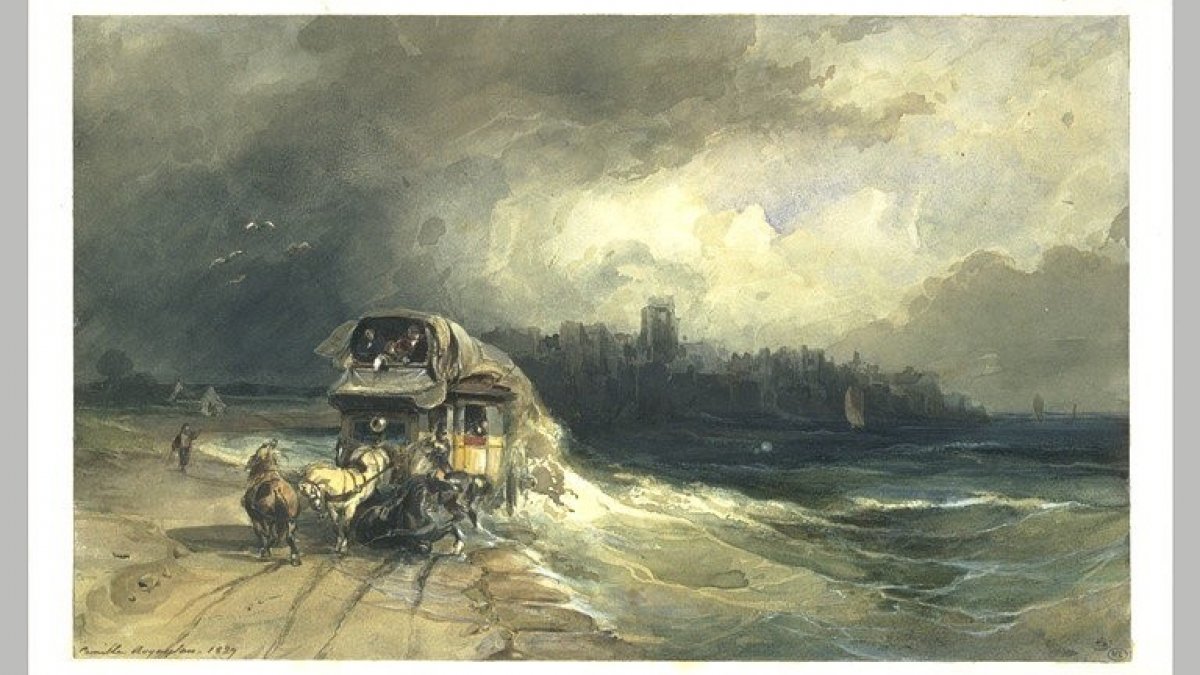Return of 12 works to the heirs of Armand Dorville
Published on 17/06/2021 - Updated on 03/05/2024

On the recommendation of the CIVS, Prime Minister Jean Castex has decided to return to the descendants of the Jewish lawyer Armand Dorville twelve works acquired by the French State in 1942. These artworks are currently in the Louvre, the Musée d’Orsay and the Château de Compiègne.
They have to get a special authorization in order to be taken away out of the national collections. The French Government will present a draft law to effectively implement this decision.
Circumstances
Armand Dorville, a French Jewish lawyer, died in July 1941 at his home in the “southern zone” of France, under the authority of the Vichy government. In agreement with the heirs, his collection and furniture were put up for sale by his testamentary executor. On the 24 June 1942, the first day of the sale in Nice, a provisional administrator was appointed by the General Commissariat for Jewish Affairs. The sale went well. The national museums bought twelve works. Six months later, in December 1942, the provisional administrator finally asked that the family be exempted from the provisional administration. The Vichy administration agreed in July 1943 and the proceeds of the sales were then sent to the family’s notary in form of government bonds. The heirs, however, were dispersed in the south of France, which prevented them from receiving what was owed to them. In March 1944, five members of the family, including a sister, two nieces who were heirs to Armand Dorville and two daughters of his nieces, were arrested, deported, and murdered in Auschwitz. The surviving heirs received the proceeds of the sales in 1947, which were included in the settlement of Armand Dorville’s estate duty.
The procedure
On November 13, 2019, the descendants of Armand Dorville’s legatees applied to the CIVS to have the auctions cancelled based on the order of 21 April 1945 (ruling on the nullity of acts of spoliation carried out by the enemy during World War II) and the restitution of 20 works. This complex case has given rise to extensive research to establish the facts, on the part of the Ministry of Culture (Mission de recherche et de restitution des biens culturels spoliés entre 1933 et 1945) and the CIVS. Several hundred pages of archives were examined, and the investigation was carried out by two CIVS magistrate rapporteurs instead of one normally. The CIVS deliberative panel met on April 9, 2021, and the recommendation was issued 5 weeks later on May 17.
The CIVS recommendation
To cancel the sale, only the judge can rule on the application of the order of 21 April 1945. Consequently, the request of cancellation, based on the application of this text, could not be examined by the CIVS. The CIVS considered that the sale has not been forced neither in its organisation nor in its execution for many reasons. It was decided by the heirs and organised by the executor (a friend and colleague of Armand Dorville). The appointment of the provisional administrator had no effect on the continuation of the sales. The rightful owners were free to exercise their right of withdrawal for 46 of these works and the proceeds of the sale were well above than estimated.
However, the sale under provisional administration did not allow the heirs to enjoy the proceeds of the sale. This particular Aryanization measure, carried out in application of the law of July 22, 1941, is considered to be an anti-semitic spoliation within the meaning of the decree of September 10, 1999, governing the principles of the CIVS. Also, the deportation and extermination of some of Armand Dorville’s legatees, and the dispersal of the other heirs, which occurred as a result of the anti-Semitic persecutions, further delayed the payment of the proceeds of the sale. These circumstances give rise to a specific financial loss for which compensation is payable. Furthermore, during the sales in June 1942, the French Administration, which knew that these sales were subject to the law of 22 July 1941, acquired 12 works. For these reasons the CIVS considers that these works should not be kept in public collections. However, the handing over is currently in conflict with the principle of inalienability of public property (referring to the Heritage Code). Only a law can authorise this.
List of the 12 works
- Henry Bonaventure Monnier, Portraits de Joseph Prudhomme et de Henry Monnier, aquarelle, musée du Louvre, RF 29339 ;
- Henry Bonaventure Monnier, Les trois matrones, aquarelle, musée du Louvre, RF 29340 ;
- Henry Bonaventure Monnier, Les visiteurs, aquarelle, musée du Louvre, RF 29341 ;
- Henry Bonaventure Monnier, Une soirée chez Madame X, plume gouachée, musée du Louvre, RF 29341 bis ;
- Jean-Louis Forain, Femme à la terrasse fleurie (ou Jeune femme debout sur un balcon, contemplant des toits parisiens), aquarelle, musée d’Orsay, RF 29342 ;
- Constantin Guys, Jeune femme et sa duègne, aquarelle, musée d’Orsay, RF 29334 ;
- Constantin Guys, La présentation du visiteur (ou Présentation de visiteur), plume et lavis, musée d’Orsay, RF 29335 ;
- Constantin Guys, Cavaliers et amazones, plume et aquarelle, musée d’Orsay, RF 29336 ;
- Constantin Guys, La loge de l’Empereur pendant une représentation de Madame Viardot dans « Orphée » (ou La loge de l’Empereur), plume et aquarelle, musée d’Orsay, RF 29337 ;
- Constantin Guys, Revue aux Invalides par l’empereur Napoléon III (ou Une revue aux Invalides), plume et aquarelle, musée d’Orsay, RF 29338 ;
- Pierre-Jules Mène, L’amazone présumée être Sa Majesté l’impératrice Eugénie, cire originale, château de Compiègne, C 42.064 ;
- Camille Roqueplan, La diligence en danger, aquarelle, musée du Louvre, RF 29333.